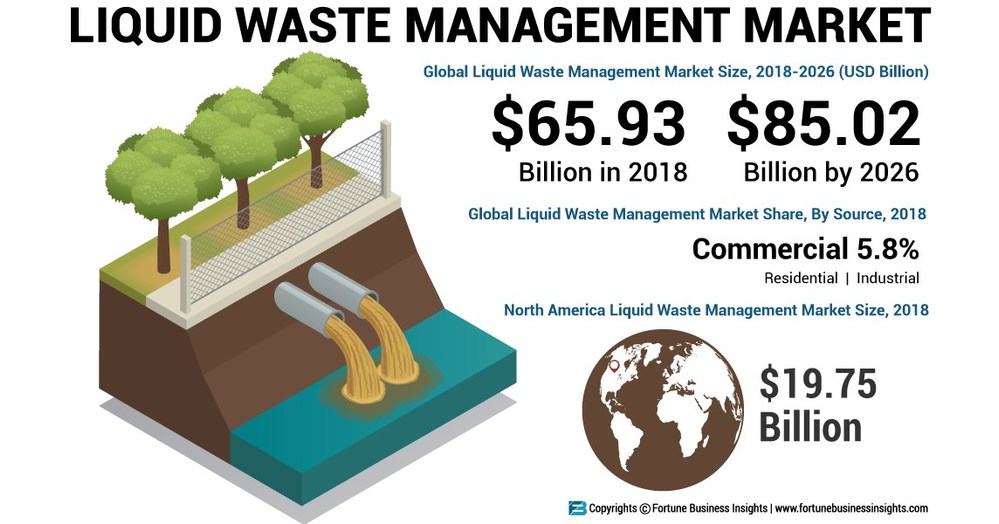The Basic Principles Of Reclaim Waste
The Basic Principles Of Reclaim Waste
Blog Article
The 4-Minute Rule for Reclaim Waste
Table of ContentsAn Unbiased View of Reclaim WasteSome Ideas on Reclaim Waste You Should KnowNot known Facts About Reclaim WasteThe Reclaim Waste DiariesAll about Reclaim Waste
Discover the types, events, and kinds of liquid waste. Domestic sewage waste refers to the waste and items from a household septic system. This kind of waste is developed by humans in houses, colleges, and other buildings. This only includes septic systems that have a drain area. The proper administration and disposal of residential sewer waste require fluid waste to be transferred to a sewage treatment plant where the appropriate approaches and tools are used to purify and dispose of waste.
Business waste usually consists of prospective threats, such as flammable materials or a combination of liquid and strong waste products, and needs an advanced and in-depth disposal process. The disposal of commercial waste usually includes the filtration of waste prior to transport to make certain secure and appropriate disposal. Industrial waste is produced from by-products and overflow of industrial procedures and manufacturing.
This kind of waste can not use the exact same sewage monitoring transportation or processes as septic or commercial liquids. The commercial waste monitoring process requires the assessment and testing of liquid waste before it goes through the disposal procedure (liquid waste disposal). Overflow waste is the liquid waste that comes from overflow and excess stormwater in very populated locations or cities
Overflow waste can cause contamination and flooding if not taken care of correctly. Guaranteeing appropriate waste management can prevent calamities and minimize ecological damage.
Our Reclaim Waste Ideas
Contact PROS Providers today to find out about our waste administration and disposal solutions and the correct ways to take care of the liquid waste you create.
(https://www.imdb.com/user/ur191403836/?ref_=nv_usr_prof_2)Do you know what happens to your water when you disengage, purge the toilet or drain pipes the washing device? No? Well, it deserves understanding. This so-called 'wastewater' is not just an important source however, after treatment, will certainly be released to our land, rivers or the ocean. Made use of water from bathrooms, showers, baths, cooking area sinks, laundries and commercial processes is called wastewater.

water used to cool down machinery or clean plant and tools). Stormwater, a type of wastewater, is drainage that flows from farming and urban areas such as roofs, parks, gardens, roadways, paths and rain gutters right into stormwater drains, after rainfall. Stormwater moves without treatment straight to local creeks or rivers, ultimately reaching the ocean.
A Biased View of Reclaim Waste
In Queensland, the majority of wastewater is treated at sewage treatment plants. Wastewater is delivered from residential or industrial sites through a system of sewers and pump stations, understood as sewerage reticulation, to a sewage therapy plant. City governments build, keep and operate most sewage treatment plants. Operators are accredited under the Environmental Defense Act 1994 to release cured wastewater at an appropriate ecological criterion right into waterways.
The Division of Natural Resources recommends city governments about handling, operating and preserving sewerage systems and therapy plants. In unsewered locations, neighborhood federal governments may require householders to mount specific or family sewer treatment systems to treat domestic wastewater from commodes, cooking areas, washrooms and washings. The Division of Natural Resources authorises making use of family systems when they are shown to be effective.
In some new communities, treatment of some stormwater to get rid of clutter, sand and gravel has actually begun utilizing gross contaminant catches. Wastewater therapy takes place in four phases: Eliminates strong matter.
Wastewater then streams right into huge tanks where solids settle and are gotten rid of as sludge. Grease and residue are skimmed from the surface area. Utilizes little living organisms recognizes as micro-organisms to break down and get rid of remaining liquified wastes and great bits. Micro-organisms and wastes are included in the sludge. Removes nitrogen and phosphorus nutrients that might cause algal flowers in our rivers and important source threaten water life.
Some Known Details About Reclaim Waste
Nutrient removal is not available at all sewage therapy plants due to the fact that it calls for pricey specialist devices. Clear fluid effluent created after treatment may still contain disease-causing micro-organisms - liquid waste disposal melbourne.

Most wastewater streams right into the sewage system. Under the Act, regional federal governments provide authorizations and licences for environmentally pertinent tasks (ERAs) including wastewater launches that may have a local effect.
Not known Details About Reclaim Waste
Or else, samples are taken for research laboratory analysis. Usually numerous tests are required to develop the levels of each of the different contaminants such as oils, hefty steels and chemicals in water. Monitoring offers accurate info concerning water top quality and can confirm that licence conditions are being satisfied. The details gotten through monitoring offers the basis for making water high quality decisions.
Report this page